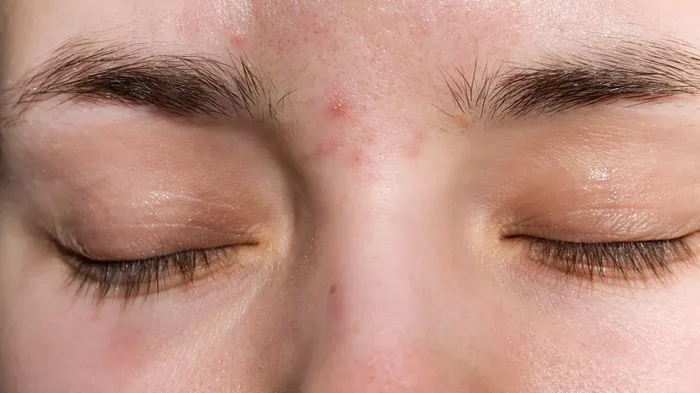Pimple scars, also known as acne scars, are a common concern for many individuals who have experienced acne. These scars are a result of the skin’s inflammatory response to acne lesions, which can cause damage to the underlying skin tissue. Understanding the causes and types of pimple scars is essential for selecting the appropriate treatments for pimple scars.
Causes of Pimple Scars
The primary cause of pimple scars is the inflammation that occurs during an acne breakout. When the skin pores become clogged with oil, dead skin cells, and bacteria, it leads to swelling. This inflammation can break the follicle wall, causing damage to the skin. If the rupture occurs near the surface of the skin, the lesion is usually minor and heals quickly. However, if the rupture is deep, it can spill the infected material into the dermis, destroying healthy skin tissue. The skin attempts to repair itself by forming new collagen fibers, which may result in a scar.
Types of Pimple Scars
Pimple scars can be broadly categorized into two types: atrophic (depressed) and hypertrophic (raised). Each type has distinct characteristics and may require different treatment approaches.
Atrophic Scars: These are the most common type of acne scars and are further divided into:
Ice Pick Scars: Deep, narrow, and pitted scars that resemble the marks made by an ice pick. They penetrate deep into the dermis and are often difficult to treat.
Boxcar Scars: Broad, rectangular depressions with sharply defined edges. They are usually wider than ice pick scars and give the skin a pitted appearance.
Rolling Scars: Wide depressions with rounded edges that create an undulating or wave-like appearance on the skin. They are caused by damage under the surface of the skin.
Hypertrophic Scars: These scars are raised above the surface of the skin and occur when the body produces too much collagen during the healing process. Unlike atrophic scars, hypertrophic scars do not spread beyond the original site of the injury.
Effective Treatments for Pimple Scars
Treating pimple scars involves various methods, each targeting different aspects of the scarring process. The choice of treatment depends on the type and severity of the scars, as well as the patient’s skin type and preferences. Here are some effective treatments for pimple scars:
Topical Treatments
Topical treatments are often the first line of defense against pimple scars. They are non-invasive and can be effective for mild to moderate scarring. Some of the most common topical treatments include:
Retinoids: These vitamin A derivatives, such as tretinoin and adapalene, help promote cell turnover and stimulate collagen production. They can improve the appearance of atrophic scars by smoothing out the skin’s surface and reducing discoloration.
Alpha Hydroxy Acids (AHAs): AHAs, such as glycolic acid and lactic acid, exfoliate the skin and promote the shedding of dead skin cells. Regular use can help reduce the appearance of surface scars and improve skin texture.
Silicone Gels and Sheets: Silicone-based products are often used to treat hypertrophic scars. They create a protective barrier over the scar, which helps to hydrate the skin and reduce scar thickness and redness.
Vitamin C: This potent antioxidant can brighten the skin and reduce hyperpigmentation associated with pimple scars. Vitamin C also promotes collagen synthesis, aiding in the repair of damaged skin.
Procedural Treatments
For more severe or persistent scars, procedural treatments performed by dermatologists can offer significant improvements. These treatments include:
Chemical Peels: Chemical peels involve applying a solution to the skin that causes the top layers to peel off, revealing smoother, less scarred skin underneath. There are different types of chemical peels, ranging from superficial to deep, depending on the severity of the scars.
Microdermabrasion: This non-invasive procedure uses a device to exfoliate the top layer of skin, removing dead skin cells and promoting new skin growth. It is effective for mild scarring and can improve skin texture and tone.
Dermabrasion: A more intensive form of exfoliation, dermabrasion involves using a rotating instrument to remove the outer layers of skin. It is suitable for deeper scars but requires a longer recovery time compared to microdermabrasion.
Laser Therapy: Laser treatments, such as fractional laser and ablative laser, target the deeper layers of the skin to stimulate collagen production and resurface the skin. Laser therapy can significantly improve the appearance of both atrophic and hypertrophic scars.
Microneedling: Also known as collagen induction therapy, microneedling involves using fine needles to create tiny punctures in the skin. This triggers the body’s natural healing process, promoting collagen and elastin production. Microneedling can be effective for all types of atrophic scars.
Subcision: This minor surgical procedure involves inserting a needle under the skin to breakup the fibrous bands that cause rolling scars. Subcision can improve the appearance of depressed scars and is often combined with other treatments for better results.
Fillers: Injectable fillers, such as hyaluronic acid, can be used to plump up depressed scars, making them less noticeable. Fillers provide temporary results and may require repeat treatments to maintain the improvement.
Natural and Home Remedies
While professional treatments are often more effective, some natural and home remedies can help improve the appearance of pimple scars, especially when used consistently over time. These remedies include:
Aloe Vera: Known for its soothing and healing properties, aloe vera can help reduce inflammation and promote skin repair. Applying fresh aloe vera gel to the scars can improve skin texture and reduce redness.
Honey: Honey has antibacterial and healing properties that can help fade scars. Regular application of raw honey to the affected areas can promote skin regeneration and improve overall skin health.
Coconut Oil: Rich in fatty acids and antioxidants, coconut oil can moisturize the skin and reduce the appearance of scars. Massaging coconut oil into the scars can help soften and lighten them over time.
Lemon Juice: The natural bleaching properties of lemon juice can help lighten dark scars and even out skin tone. However, lemon juice can be irritating, so it should be used with caution and always followed by sunscreen application.
Apple Cider Vinegar: Known for its astringent properties, apple cider vinegar can help exfoliate the skin and reduce the appearance of scars. Diluting it with water and applying it to the scars can improve skin texture and tone.
Baking Soda: A natural exfoliant, baking soda can help remove dead skin cells and promote new skin growth. Mixing baking soda with water to form a paste and applying it to the scars can improve their appearance.
Prevention Tips for Pimple Scars
Preventing pimple scars is often easier than treating them. Here are some tips to help reduce the risk of developing scars:
Avoid Picking or Squeezing Pimples: Picking at or squeezing pimples can cause deeper inflammation and increase the likelihood of scarring. It’s best to let the pimples heal naturally or seek professional treatment.
Use Non-Comedogenic Products: Non-comedogenic skincare and makeup products are formulated to not clog pores, reducing the risk of breakouts and subsequent scarring.
Keep Your Skin Clean: Regular cleansing helps remove excess oil, dirt, and bacteria from the skin, preventing the formation of new pimples. Use a gentle cleanser suitable for your skin type.
Sun Protection: Sun exposure can worsen scars and make them more noticeable. Always use sunscreen with at least SPF 30 and wear protective clothing when outdoors.
Stay Hydrated: Drinking plenty of water helps keep the skin hydrated and supports the body’s natural healing processes. Hydrated skin is less prone to scarring.
Healthy Diet: A diet rich in vitamins and minerals, especially those that promote skin health like vitamins A, C, and E, can help reduce the severity of acne and support skin repair.
Conclusion
Pimple scars can be a frustrating and persistent skin concern, but with the right approach, their appearance can be significantly improved. A combination of professional treatments, topical applications, and natural remedies can help reduce the visibility of scars and enhance skin texture. Prevention is also key, so adopting good skincare habits and avoiding behaviors that can worsen acne is essential. Consulting with a dermatologist can provide personalized recommendations and ensure that you choose the most effective treatments for your skin type and scar severity. With patience and consistency, achieving smoother, clearer skin is possible.
[inline_related_posts title=”You Might Be Interested In” title_align=”left” style=”list” number=”6″ align=”none” ids=”9120,9028,9025″ by=”categories” orderby=”rand” order=”DESC” hide_thumb=”no” thumb_right=”no” views=”no” date=”yes” grid_columns=”2″ post_type=”” tax=””]
































